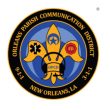Federal Signal provides mobile command center for inauguration
The Washington, D.C., Office of the Chief Technology Officer (OCTO) turned to Federal Signal Corp. to develop a customized alerting system that featured digital speaker arrays, intelligent command and control software, a voice controller, IP-based cameras and wireless capabilities to support security operations surrounding the inauguration of President Barack Obama, said Michael Wons, Federal Signal’s vice president and general manager of public safety systems.
Wons said the main deployment was the alerting system, a fixed application that included the installation of digital speaker array and alerting notification system software systems in the event of an emergency incident. “If a situation occurred, public-safety officials could use the [alerting] system to send tone alerts, as well as voice notification to people in the event of an evacuation as the event was unfolding,” he said.
The company installed the arrays throughout the D.C. area and also was charged with establishing a video-surveillance network. The result was the installation of multiple, off-the-shelf, 360-degree pan/tilt/zoom mega-pixel IP cameras along the inauguration’s Pennsylvania Avenue parade route. Mobile access points, or wireless nodes, were installed on rooftops and other undisclosed areas around the inauguration to support wireless communications, Wons said.
To support field officers, Federal Signal deployed two 55-foot long self-standing trailers that acted as wireless hot spots. Each trailer was powered by a 7-kilowatt diesel generator and included a 50-foot tower. Inside, it housed multiple technologies, including mobile routers and other systems that supported 4.9 GHz and 2.4 GHz hotspots. In addition, the system uses 3G commercial cellular as a backup to send video feed to the trailers and the OCTO command center.
Wons said it was challenging to interoperate with existing networks, because his team had to conquer multiple firewalls across entities while deciphering the different ways each public-safety agency manages its network. He said it is tough to access the correct portals, to make connections and to ensure the security features work across such networks.
“We had to have a secure end to leverage the existing network and stream the data real-time,” he said. “So we used our interoperable CodeSpear communication platform that allows any device to communicate across any kind of network medium, such as UHF, VHF, cellular or VoIP.”
It also was challenge to access secure government buildings around the inauguration, such as the FBI building. Wons said for the system to work, infrastructure like broadband wireless routers, antennas and the speaker array needed to be installed on the rooftops, as well as along the parade route. Wons said the company had to work with the FBI and government agencies to access rooftops and other areas around the parade route — both public and private — to mount systems.
“We needed to be strategic where we placed the arrays down Pennsylvania Avenue, too, and where we could tap into power and mount systems,” he said.
Each trailer cost $45,000 to $50,000, which included the requested technologies as well as tapping into the 3G network, Wons said.
Look for our April 2009 print edition for a full-length feature on inauguration technologies.

















